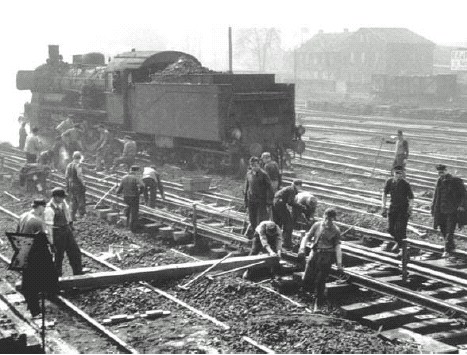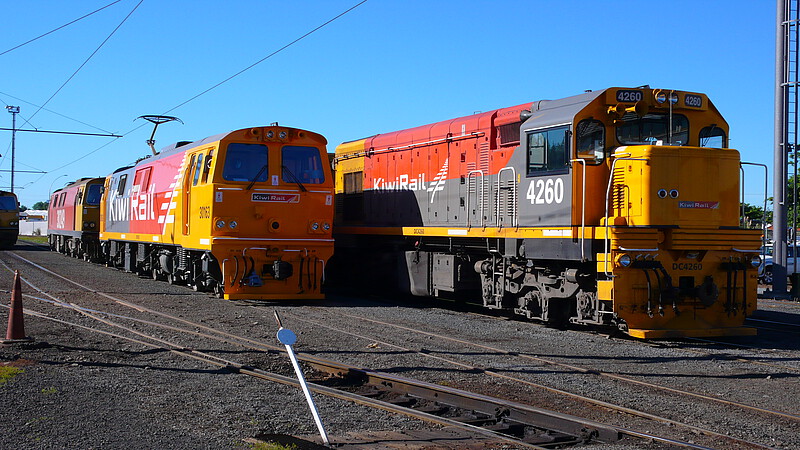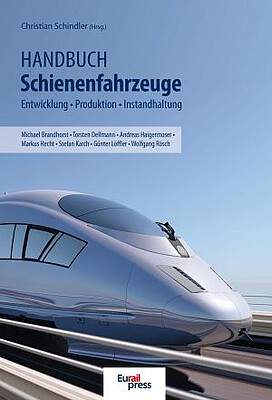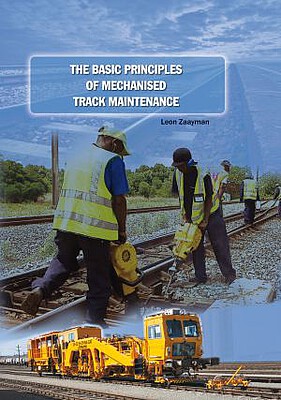Propulsion technology
Railway power equipment can broadly be classified depending on the source of energy:
- Steam, particularly, steam from water.
- Mineral oil products, particularly diesel fuel.
- Electricity.
- Combinations of different sources of energy.
Special cases, such as caustic soda locomotives, steam engines, gas engine railways, cable railways with fixed drive-systems, magnetic levitation railways or experimental procedures should not be considered further in this section.
Steam Locomotives
The classic railway was operated for decades by steam traction. Steam locomotives and steam railcars dominated the global railway scene for about 150 years. They are nothing more than “a rail mounted mobile steam power station” [1].
Steam traction is based on the energy source water vapour which is produced in the vehicle by means of a steam boiler that burns coal or oil, or less often wood, using a supply of water that is carried with it. This requires a considerable heating up time to produce the necessary operating pressure before the train can be started. The core piece of the actual drive system is the one or more steam engines in which a piston is exposed to pressure from steam on alternative sides and thus finds itself in a continual translative motion, backwards and forwards. With the help of a complicated linkage of rods and pins on the wheels these backwards and forwards movements are converted to rotation. Fireless or steam accumulator locomotives get their operating pressure from stationary plant and carry a supply of steam in a pressure boiler. They are thus ready to work more quickly but only have a reduced range of activity.
The first steam engine was built in the 16th century. A series of important inventions was necessary in the 18th and 19th centuries before that of James Watt in 1775 (with condenser, double acting cylinder, flywheel and centrifugal governor). By 1769 Cugnot’s steam car was running tests on the streets. Further experiments followed, before in 1803 the first journeys took place on rails, in some places with gear wheels on the track or with track on stilts. The forefather of all steam locomotives as we know them today was the ‘Rocket’ of Robert Stephenson. In the following 130 years or so there was continuous improvement, and further development was done to improve the low efficiency. Again and again even today plans are put forward to bring back steam traction with new technology and high efficiency. Attractive as it may be to use a primary energy source (coal) the age of both coal and oil burning is coming to an end.
Diesel Locomotives
Among the drive systems using internal combustion machines it is diesel engines that have achieved the greatest success worldwide. Nevertheless, liquid petroleum gas and petrol engines have also been used in individual cases, as well as the gas turbines borrowed from the aircraft industry which have been used for express trains in several countries. All these units burn mineral oil products or gas. Since the majority of the energy contained in the fuel is converted into heat, the efficiency is limited. It falls even further if, additionally, fuel, raw material production and transportation are considered.
Vehicles with internal combustion engines carry their fuel with them and can therefore be used anywhere - even in the case where their normal line is out of service. The rotation energy produced in the cylinders of a diesel engine (developed by Rudolf Diesel from 1892 onwards) can be transferred to the driving axle by three types of Transmission:
- Diesel mechanical, by means of a manual gearbox.
- Diesel hydraulic, by means of hydraulic fluid and torque converters.
- Diesel electric, by means of electric current.
The diesel mechanical transmission have their limitations and also, there are short interruptions in the traction when switching gears. Because of their advantages the diesel hydraulic and diesel electric transmissions have been more successful with different preferences depending on the country, operator and maintenance company.
Electric Locomotives
After Werner Siemens first reversed the electrodynamic principle in 1879 and used it to drive a small railway, electric drive systems have been continuously developed for railways. A particularly useful characteristic of electric motors is that they can be momentarily heavy overloaded. This is particularly useful when starting up (starting tractive effort) and enables the necessary motor size to be kept small.
Only electric drives make quiet, locally free of emissions and ecologically acceptable transport possible. With regard to emissions it is important to know from which source the electric energy is obtained. The drive is completely clean if instead of coal or atomic current, renewable energy (such as hydroelectric power, wind or solar energy) is used. An overall efficiency of 80% and more can be achieved. Some companies have already partly or completely gone over to purchasing “environmental current”.
There are several solutions possible with electric traction.
Direct current motors (DC voltage)
The direct current motor was used from the beginning on rail vehicles. It is simple and robust and it is easy to recover energy when braking. Indeed the power transmission, in spite of larger cable cross sections in the direct current network, is subject to losses, which reduces the voltage and is not transformable. Network voltages of up to 750 V and recently up to 1,000 V are used in suburban networks. There are main line railways electrified at 1,500 V DC, for example, in France and Holland and also at 3,000 V which is the maximum - in places such as Belgium, Italy, Slovenia and South America.
Alternating current motors (single phase AC)
The operation of alternating current motors profits from the big advantage that power transmission between power station and user, at high voltages, is only subject to small losses. Alternating current can easily be transformed, however the power of the motor is limited. Many railways in Europe use AC with 15 kV 16 2/3 Hz overhead line voltage, in France 25 kV 50 Hz, in the USA 50 kV 50 Hz and in states of the old Soviet Union 11 kV 25 Hz is used. Transformers in vehicles and electronic components make alternating current usable for locomotives.
Three phase motors (three phase AC)
Three phase motors are today considered the ideal traction motor for railways, both in suburban areas as in heavy and high speed traffic. They can work under alternating current as well as under direct current. The current is transformed inside the vehicle from the input line voltage and moreover - in the AC system - first converted to DC and then always to three phase AC. Three phase asynchronous motors are simple, robust, require little maintenance and are ideal for recuperation (braking current regeneration) in both current systems. The current supply from three-cable three-phase networks, which was tried in the early days of electric traction, failed due to the high cost for the three external headers along the line and their rather impractical application.
Hybrid Locomotives
On closer consideration - according to present day terminology - diesel-electric motive power units are fitted with the basic elements of series hybrid technology, because the diesel engine works merely as the power plant for the electric drive. Additionally, a special feature of the present day hybrid is the possibility of being able to store energy and so significantly reduce the total energy required. A modern hybrid vehicle has electric traction motors which are always supplied from the batteries. These are charged by regeneration and the internal combustion engine or fuel cells which run as required, and occasionally from the overhead line or inductively. In order to ensure a long life for the battery (lithium-ion technology) the cells are always discharged to the smallest extent possible. For suburban railways these high capacity batteries can be supplemented by high capacity condensers which can absorb and give up energy for a short time almost loss free, which is particularly useful in the starting phase.
A peculiarity are the electric locomotives with a small ‘Last mile diesel’. This enables low speed shunting operations to be carried out in connection with a generator wherever no overhead line is installed. Looking to the future this diesel can be replaced by an energy store.
You can find suitable specialist literature to the topic here:
Handbook Railway vehicles (German)
This book fills the gap in the market between the numerous theoretical works, which are limited to one topic or few specific topics on rail vehicle technology, and the books for professionals. The target group for this book is students of railways and rail vehicle technology as well as professionals from the industry who wish to refresh or supplement their Knowledge.
In nearly 190 years of railway history, rail vehicle technology has constantly developed. Today the technical knowledge necessary for the development, construction, operation and maintenance is so complex and extensive that it can not be comprehensively mastered by a single specialist alone.
The Basic Principles of Mechanised Track Maintenance
This book is dedicated to the many people involved in the day to day planning and performance of track maintenance activities. Providing a practical approach to everyday challenges in mechanised track maintenance, it is not just intended as a theoretical approach to the track system.
Railways aim at transporting people and freight safely, rapidly, regularly, comfortably and on time from one place to another. This book is directed to track infrastructure departments contributing to the above objective by ensuring the track infrastructure’s reliability, availability, maintainability and safety – denoted by the acronym RAMS. Regular, effective and affordable track maintenance enable RAMS to be achieved.
- [1] Preuß, E., Preuß, R.: Lexikon Erfinder und Erfindungen. Eisenbahn. Berlin 1986, VEB Verlag für Verkehrswesen. ISBN 3-344-00053-5





